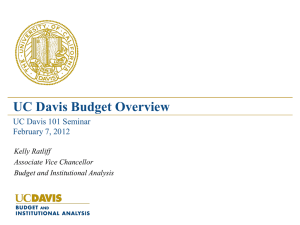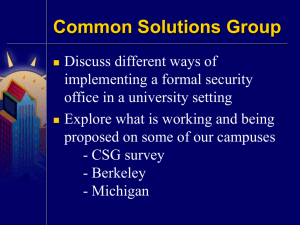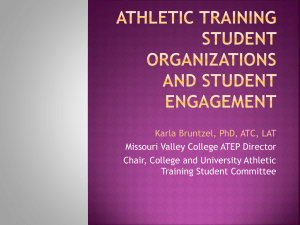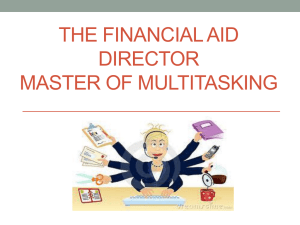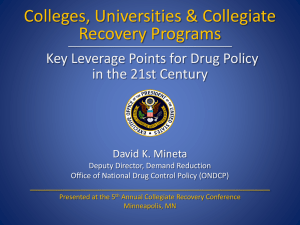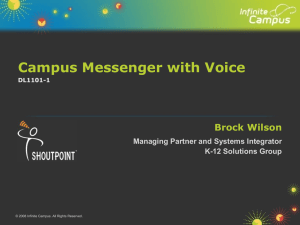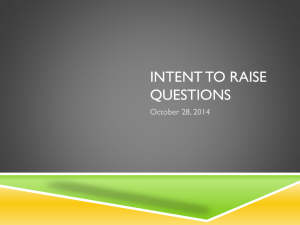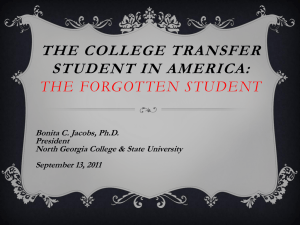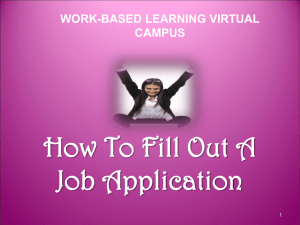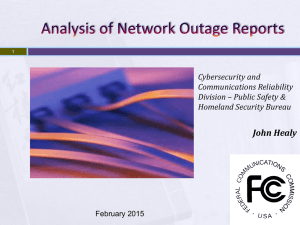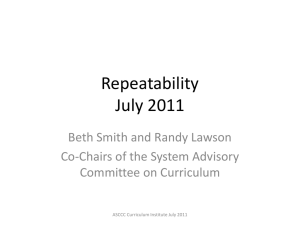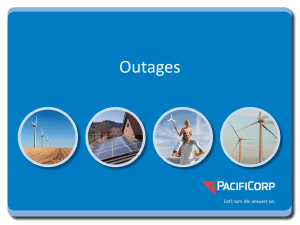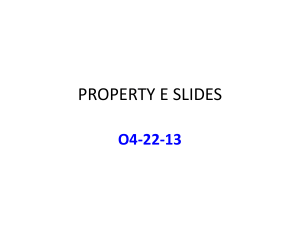Unified Communications Model Framework
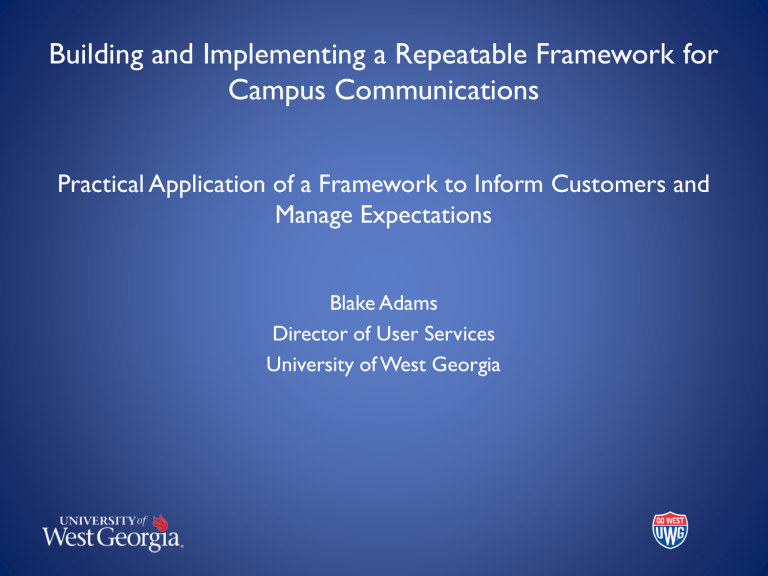
Building and Implementing a Repeatable Framework for
Campus Communications
Practical Application of a Framework to Inform Customers and
Manage Expectations
Blake Adams
Director of User Services
University of West Georgia
Building and Implementing a Repeatable Framework for
Campus Communications
Overview
• Background
• Shared Challenges
• What we can we do?
• Building and Implementing a Framework
• Case Study/ Communications Framework – Implementing at
UWG
• Challenges, Lessons learned, Emerging Trends
• Conversation
My Background
• Director of User Services
• 20 years of experience in
Customer Service, 15 in
Information Technology
About West Georgia
A comprehensive doctoral-granting university in Carrollton, Georgia
Founded in 1906 as ‘Fourth District A&M School’
11,700 students, and over 1,100 faculty/staff.
ITS has about 60 full time staff, and many student employees.
We provide all of the technology support for campus – Banner, e-mail, campus web presence, desktop support, classroom and AV support, campus computer labs, the data & telephone networks, etc.
Shared Challenges
What challenges are you facing in communication right now?
• Customer Needs Growing
• Department Resources Shrinking
• Expectations Increasing – Speed to Resolution of Issue/Request
• Methods of Communication Continuously Changing
– How do you tailor every message to every customer in a one to many medium?
• Customers and Services Providers – are we speaking the same language?
• How much is too much, or not enough?
• No one with in IT holding the title of “Communicator”
• We are Tasked With Planning for the Unplanned
• Failure to Communicate = Reputational Risk
What can we do about the Challenges we Face?
• Communicate, Communicate, Communicate
– How do we speak to our users?/How do they listen? (Know your audience)
• Strategic Communication Plan
– Templates (Consistency), Clarified expectations, etc
• Clarify Service Offerings
– What do you do? What services do you provide or support?
– How can a customer find the status of the services?
• Calendar of Maintenance
– Announce Planned Outages of Service
– Record Unplanned Outages of Services
– Publish a Standing Maintenance Schedule
• Email Alternative – Mass Communication
– Sharepoint
– Text Messaging
– Face to Face
• Partnerships within your department
– Build relationship and trust
– Allow Subject Matter Experts to focus on Subject Matter
– Customer Service/Service Desk/Help Desk – Must focus on communication
• Drive Help/Service Desk functions from inbound function (reactive) to outbound (proactive) function.
How do we tackle the problem?
How do we implement all of these changes?
“Hint” – Here’s the framework
Building a Framework
A well though out, repeatable plan This
Not this
Brainstorm First
Building a Framework
Organize Second
A shotgun approach will not work
Building a Framework
A solo mission will not work.
Find – or be – a champion.
Building a Framework
• Communicate the Vision
• Review progress
• Bring in the right help at the right time
• Break down barriers
Building a Framework
Organize based on quick wins/low hanging fruit
Follow by bigger picture ideas.
Building a Framework
Plan for a culture shift.
• Get buy in.
• Be patient.
Building a Framework
Deploy, Market, Revise, Repeat.
A Repeatable Framework for Campus Communications
Service/Status Page – The Customer’s Home Base for
Information
http://status.westga.edu
A Repeatable Framework for Campus Communications
A Repeatable Framework for Campus Communications
• Brand name and describe Enterprise/Mission Critical Services
• Establish informal OLAs for communications and handoff
•
• Build Calendar of Maintenance (Scheduled Events/Outages)
• Status Page
Service Interruption Message (SIM)
Anchor
Tools
• Communication Templates (Format and Content)
• Branded Closings
• Defined ownership of status page and SIM updates
• Defined Announcement Frequency
• Service Level Guidelines – Communication
• Value Touch Points Defined and Marketed
E-MAIL RELIANCE: HIGH
A Repeatable Framework for Campus Communications
• Formalize OLAs for communication/handoff/response/resolution
• Social Media Integration
– RSS Feeds
• Online Customer Self Service
– Right Sized “Service Catalog”
– Top FAQs Published and Visible (easy to find)
– Integrated/Subscribeable- Global Issue Communication
• Service Level Guidelines – Services – Fully defined SLGs for each branded service
• New Value Touch Points Defined and Marketed
E-MAIL RELIANCE: Moderate
A Repeatable Framework for Campus Communications
• Service Desk Level Monitoring of Mission Critical Services
• Mission Critical Emergency Text Messaging (Opt In)
• Standardized, documented communication procedures
• 3 rd Party System/Services Support Agreements
• Comprehensive review of Service Level Agreements, Operating Level Agreements,
3 rd Party Agreements
• New Value Touch Points Defined and Marketed
E-MAIL RELIANCE: Low
A Repeatable Framework for Campus Communications
• Mobile Application Integrations (Status Updates)
• Knowledge Level Management
– Frequently Asked Questions – Extended
• Research New Communication Channels, Consider for Inclusion
• New Value Touch Points Defined and Marketed
E-MAIL RELIANCE: Supplemental
Lessons Learned and Emerging Trends
• Develop an IT Strategic Communication Plan.
• Automation is improving, consider adding where appropriate.
• Leverage texting by capturing cell phone numbers during registration.
• Distinguish between what customer wants to know and what you want customer to know.
• Craft the same message in different voices (styles) for different audiences. Speak the language they understand.
• Manage internal IT communication as well as external communication.
• Consider how much time you can put into social media monitoring before using it as a venue for communication.
Thank you!
Now let’s continue our conversation…

